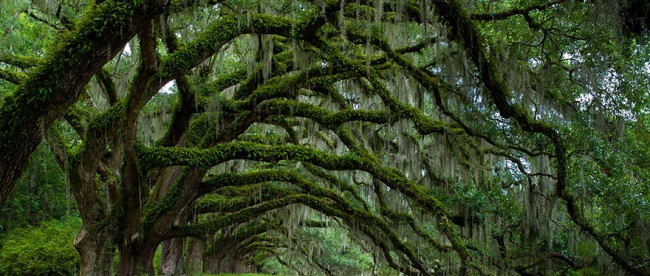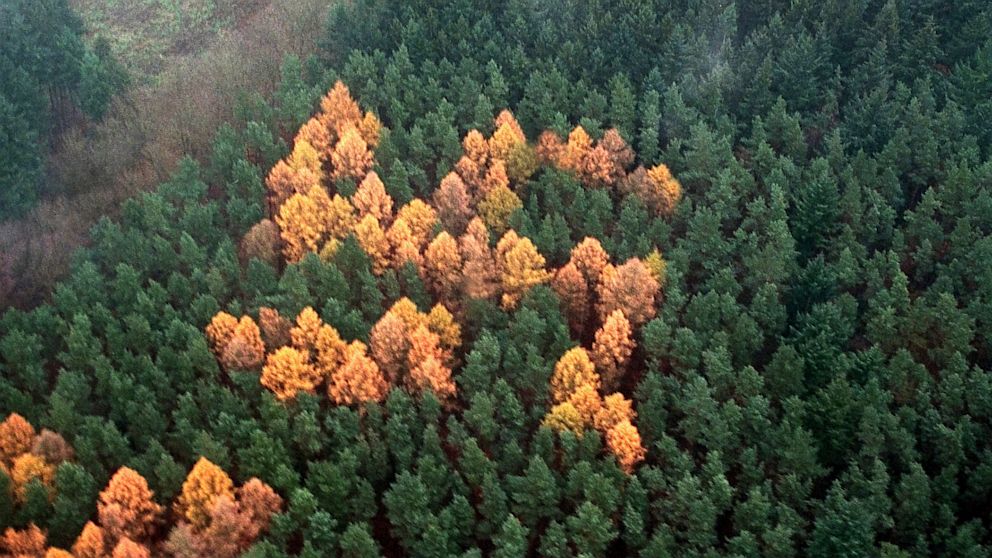The Trees of Hate

From the end of World War II until the fall of the Soviet Union nearly fifty years later, the happenings of those nations behind the Iron Curtain were hidden in the shroud of communism. Many of the goings-on came to light in the subsequent years, and most of those were stories of abuses under communist dictators. But some of the revelations unveiled in the 1990s were secrets about the Nazis. For example, shortly after the fall of the Berlin Wall, someone discovered the below, a construct of Nazi Germany some 55 years earlier.

Yes, that’s a swastika made of trees.
In or around 1992, as ABC News reported, an intern at a Brandenburg, Germany landscaping firm was looking through aerial photos of a forest about 60 miles north of Berlin, looking for irrigation lines. What he noticed was a collection of larches — trees the leaves of which, like most other trees, change colors as the seasons change. But these larches were in a forest full of pine trees, which are evergreen. In autumn, the larches turned orangish-yellow, drawing a stark contrast from the sea of green around them. And in this case, their arrangement made a 200-square-foot seasonal reference to Adolf Hitler’s regime of hate. From above, at least.
How the trees got there has been lost to history, somewhat. (The people behind nature’s worst billboard decided to take credit for this creation decades after the fact.) Per Atlas Obscura, we know that the trees were planted during Hitler’s reign, likely in the late 1930s. And, again per Atlas Obscura, the prevailing wisdom is that the planting party “was a forest warden either zealous for the Nazi party, or who was coerced who planted the trees” or perhaps “a group of Hitler Youth [who] were instructed to carry out the forestry.”
In any event, the trees were there for a couple of generations or so. But after their discovery, that began to change. The symbol likely ran afoul of modern German law and, shortly after the intern noted above found them, authorities worked to have the larches removed. Initial efforts to fell the offending trees were ineffective, though. In 1995, as Spiegel reported, “forestry workers armed with chainsaws made their way to the copse of larches and cut down 40 trees [and] reported back to their supervisors that the symbol was now unrecognizable.” But the remaining trees (and the still-visible stumps of their fallen neighbors) still painted the same hateful picture. So in December of that year, workers returned to the site, this time with more data in hand, and chopped down more trees — this time, successfully removing the image from aerial flybys.
Today, if you fly over the area, you may see a pine tree forest bespeckled by a few larches, but the latter trees are, collectively, no longer a living reference to Nazism.
Bonus Fact: The Brandenburg forest swastika isn’t the only collection of trees which once stood as a living reminder of Nazi Germany. In central Kyrgyzstan, there’s a 600-foot wide swastika of fir trees planted on the side of a hill. Per the New York Times (there’s a photo of the trees at that link), the origins of this forest of swastikas is similarly unclear, but probably dates back to the 1940s or even the 1950s. Most likely, the trees were planted by Soviet workers under the leadership of one of many German nationalists who ended up in the Soviet Union after the war.
From the Archives: The Isolated Tree: A tree, alone in the Sahara. It met its downfall in a seemingly unlikely way.
Take the Quiz: The Giving Tree quiz. (Name the things that the Giving Tree, from the Shel Silverstein book of the same name, gives to the person, and what the person is to do with those things.)
Related: “The Giving Tree” by Shel Silverstein. It’s a much nicer tree than the trees discussed above (but the book is very sad).
